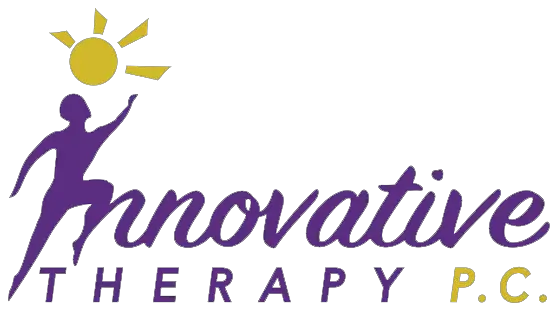I’ve had my fair share of ankle injuries over the years, and I know how frustrating a sprained ankle can be especially if you’re an athlete or someone who enjoys staying active. A sprained ankle isn’t just a minor inconvenience; it can limit your movement, affect your balance, and take weeks or even months to fully heal if not treated the right way. That’s why knowing the proper rehabilitation protocols for a sprained ankle is so important for a full and safe recovery.
Over time, I’ve learned that a step-by-step rehab plan really makes all the difference. From controlling swelling in the early stages to rebuilding strength and balance later on, each phase of recovery needs special care. With the right protocol, you can get back on your feet faster and stronger.
If you’re unsure where to begin or worried about making your injury worse, don’t worry I’ll walk you through each phase of recovery. Let’s get started.
What Is a Sprained Ankle and How Does It Happen?

An ankle sprain occurs when one or more ligaments in the ankle are stretched or torn, usually due to a sudden twist or roll. This is one of the most common sports injuries, especially among runners, soccer players, and those who train on uneven surfaces. Most often, it affects the lateral ligaments on the outside of the ankle particularly the anterior talofibular ligament (ATFL).
Sprained ankles are typically classified into three grades:
|
Grade |
Description |
Recovery Time |
|
I |
Mild tear/stretch, slight swelling |
1–2 weeks |
|
II |
Partial ligament tear, moderate pain/swelling |
3–6 weeks |
|
III |
Full ligament rupture, severe pain/swelling |
6–12+ weeks |
Symptoms and Diagnosis of Ankle Sprains
If you’ve recently twisted your ankle, these are the symptoms to watch for:
Sudden pain at the time of injury
Swelling and bruising
Tenderness when touched
Limited range of motion
Instability when walking or standing
To confirm the extent of the injury, professionals use:
Physical examination (palpation, mobility tests)
Imaging: X-rays to rule out fractures; MRI or ultrasound for soft tissue damage
If you can’t bear weight on your foot or if swelling doesn’t reduce within a few days, see a physiotherapist or doctor immediately.
The Healing Stages of an Ankle Sprain
Understanding the healing process helps set realistic expectations. The body naturally goes through the following phases:
Inflammatory Phase (0–72 hours)
Swelling, redness, and pain
Body responds to injury with increased blood flow
Proliferation Phase (Days 3–21)
New tissue and collagen formation
Swelling begins to reduce
Remodeling Phase (Week 3 onward)
Tissue strengthens
Balance and movement are restored
Healing varies based on age, injury severity, and treatment approach.
Phase-by-Phase Ankle Sprain Rehabilitation Protocol

Rehabilitation is not one-size-fits-all, but here’s a practical protocol that works for most mild to moderate sprains:
Phase 1: Acute Phase (0–5 Days)
Goals: Reduce pain and inflammation, protect the joint
Rest the injured ankle
Apply ice packs every 2 hours for 15–20 minutes
Compression wrap to limit swelling
Elevation to reduce fluid buildup
Begin gentle toe curls and ankle pumps
Avoid walking without support. Use crutches or a brace if needed.
Phase 2: Early Recovery (Days 5–14)
Goals: Restore mobility and begin weight-bearing
At this point, your swelling should reduce. You can now:
Start partial weight-bearing with a brace
Perform gentle range-of-motion (ROM) exercises
Add towel stretches or wall-assisted calf stretches
Start balance work (e.g., standing on one leg for 10–15 seconds)
Phase 3: Strengthening Phase (Week 2–4)
Goals: Build muscle and improve stability
Here’s what helped me regain confidence:
Resistance band exercises (inversion, eversion, dorsiflexion)
Calf raises (2 sets of 10 reps)
Side steps with resistance bands
Balance board or BOSU ball training
Heel-toe walking for gait correction
Make sure to train both legs to maintain balance.
Phase 4: Functional & Return to Sport (Week 4+)
Goals: Restore agility, balance, and sport readiness
At this point, the ligament is healed but still vulnerable. I follow these drills before returning to full activity:
Jogging in straight lines
Side shuffles and agility ladder
Jumping and hopping (progressively)
Sport-specific drills: dribbling, shooting, sprinting, etc.
Only return to competition when you can do all movements pain-free.
Recommended Exercises for Each Rehab Phase
|
Phase |
Exercise |
Reps/Sets |
Purpose |
|
1 |
Ankle pumps |
20–30 reps/day |
Improve circulation |
|
2 |
Towel stretch |
2 sets x 20 secs |
Restore flexibility |
|
3 |
Resistance band inversion |
3 sets x 10 reps |
Strengthen supporting muscles |
|
4 |
Plyometric hops |
3 sets x 15 reps |
Rebuild explosive movement |
These exercises should be done consistently and with proper form. If pain increases, reduce the load.
Mistakes to Avoid During Rehabilitation
I’ve seen many athletes prolong their injuries by making the same mistakes. Avoid these:
Skipping rest in the early phase
Not progressing exercises gradually
Ignoring pain or swelling
Returning to sport too early
Neglecting proprioception training
Rehab isn’t just about strength. It’s about control, awareness, and balance.
When to See a Physiotherapist or Sports Doctor

In some cases, home rehab isn’t enough. Consult a professional if you notice:
Pain that worsens after 7–10 days
Recurrent ankle sprains
Inability to perform balance drills
Visible deformity or instability
Need for taping, ultrasound therapy, or manual adjustments
I personally recommend seeing a sports physio for at least one session to guide your recovery plan.
How to Prevent Future Ankle Sprains
Once healed, you’ll want to avoid reinjury. These prevention tips have kept me injury-free:
Prevention Tips:
Always warm up before exercise
Strengthen your calves and glutes
Practice single-leg balance 3–4 times a week
Use ankle braces or taping in high-risk activities
Wear supportive shoes with proper grip
Preventive care is just as important as the rehab itself.
Nutrition and Recovery Support for Ligament Healing
Healing isn’t just about exercises. The right foods and supplements can speed up your recovery:
Essential Nutrients:
Protein – for tissue repair
Vitamin C – supports collagen production
Zinc – helps with inflammation control
Omega-3 fatty acids – reduce inflammation
Collagen peptides – improve ligament integrity
Drink plenty of water, avoid alcohol during healing, and eat whole, anti-inflammatory foods.
Real-Life Recovery Timeline: What to Expect Week-by-Week
Based on both experience and expert protocols, here’s a rough idea of how recovery might look:
|
Week |
Activity & Focus |
|
0–1 |
Rest, ice, compression, elevation |
|
1–2 |
Begin ROM exercises and light stretching |
|
2–3 |
Add resistance and light balance work |
|
3–4 |
Progress to strength and low-impact cardio |
|
4–6 |
Advance to agility and sport drills |
|
6+ |
Return to sport if fully functional |
Every injury is different, so listen to your body and adapt.
FAQs About Sprained Ankle Rehab Protocols
How long does it take to recover from a sprained ankle?
It depends on the grade of the sprain. Mild sprains heal in 1–2 weeks, while severe ones can take up to 12 weeks or more.
Can I walk on a sprained ankle?
Walking too soon can worsen the injury. Start with partial weight-bearing, and only progress as pain decreases.
Should I use ice or heat for a sprained ankle?
Ice is best during the first 48–72 hours. Heat can be used later to promote flexibility once swelling has subsided.
What happens if I don’t rehab a sprained ankle?
You risk long-term instability, chronic pain, or repeated sprains. Rehab restores function and prevents future issues.
When should I see a physiotherapist?
If pain persists beyond a week, or if you struggle with walking or balance, it’s best to get a professional assessment.
Final Thoughts on Sprained Ankle Recovery
Recovering from a sprained ankle takes time, effort, and a clear protocol but the outcome is worth it. I’ve personally seen how structured rehab can restore confidence and strength. The key is to respect each healing phase, stay consistent with exercises, and never rush back to full activity too early. Use this guide as your blueprint, and don’t hesitate to seek help if needed.
Also Read:





